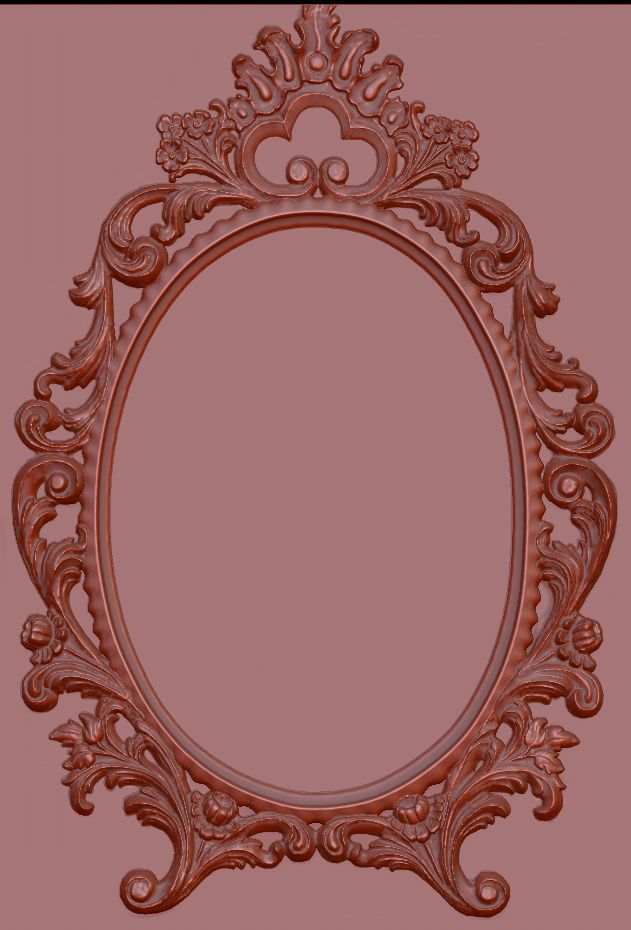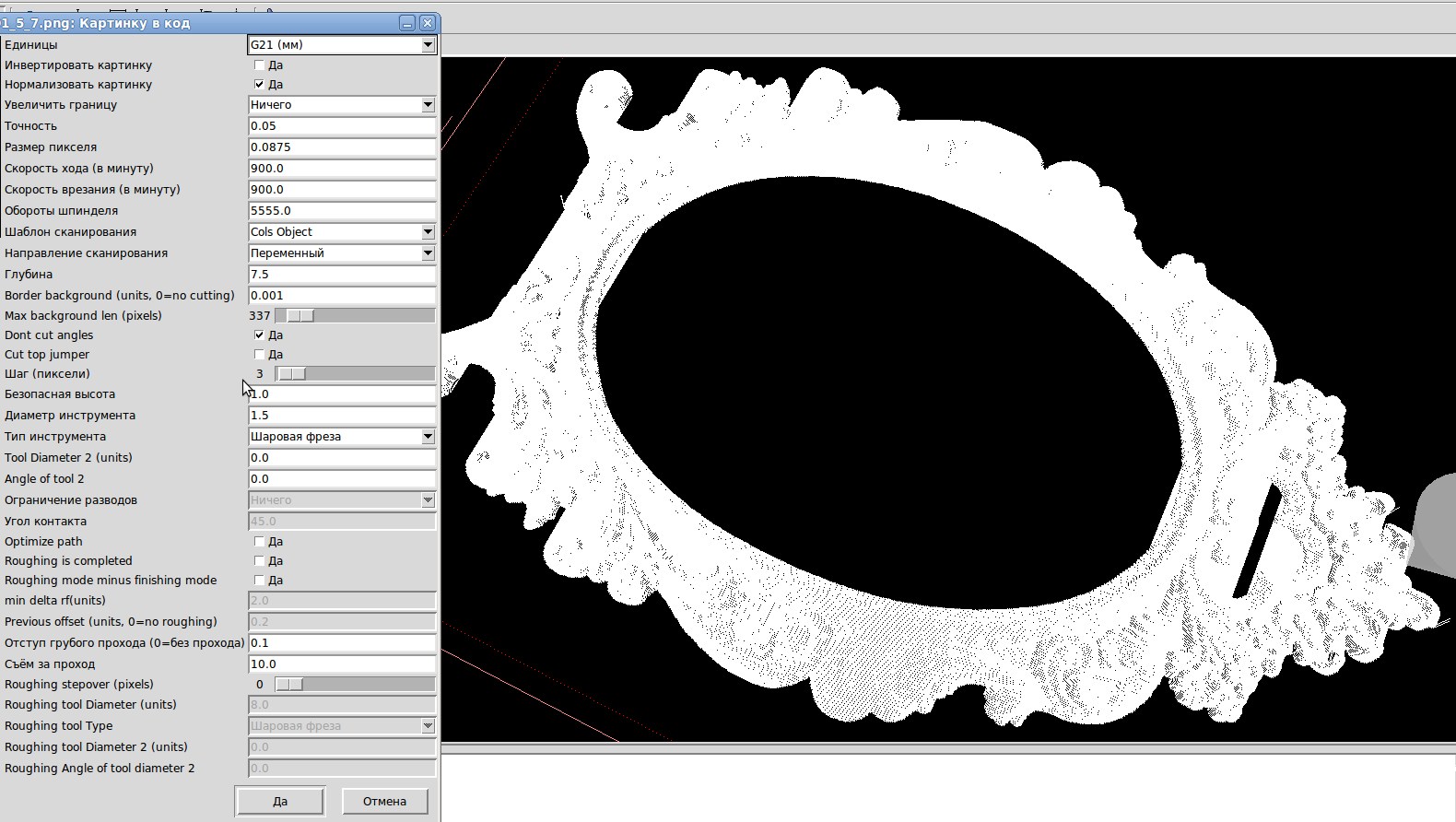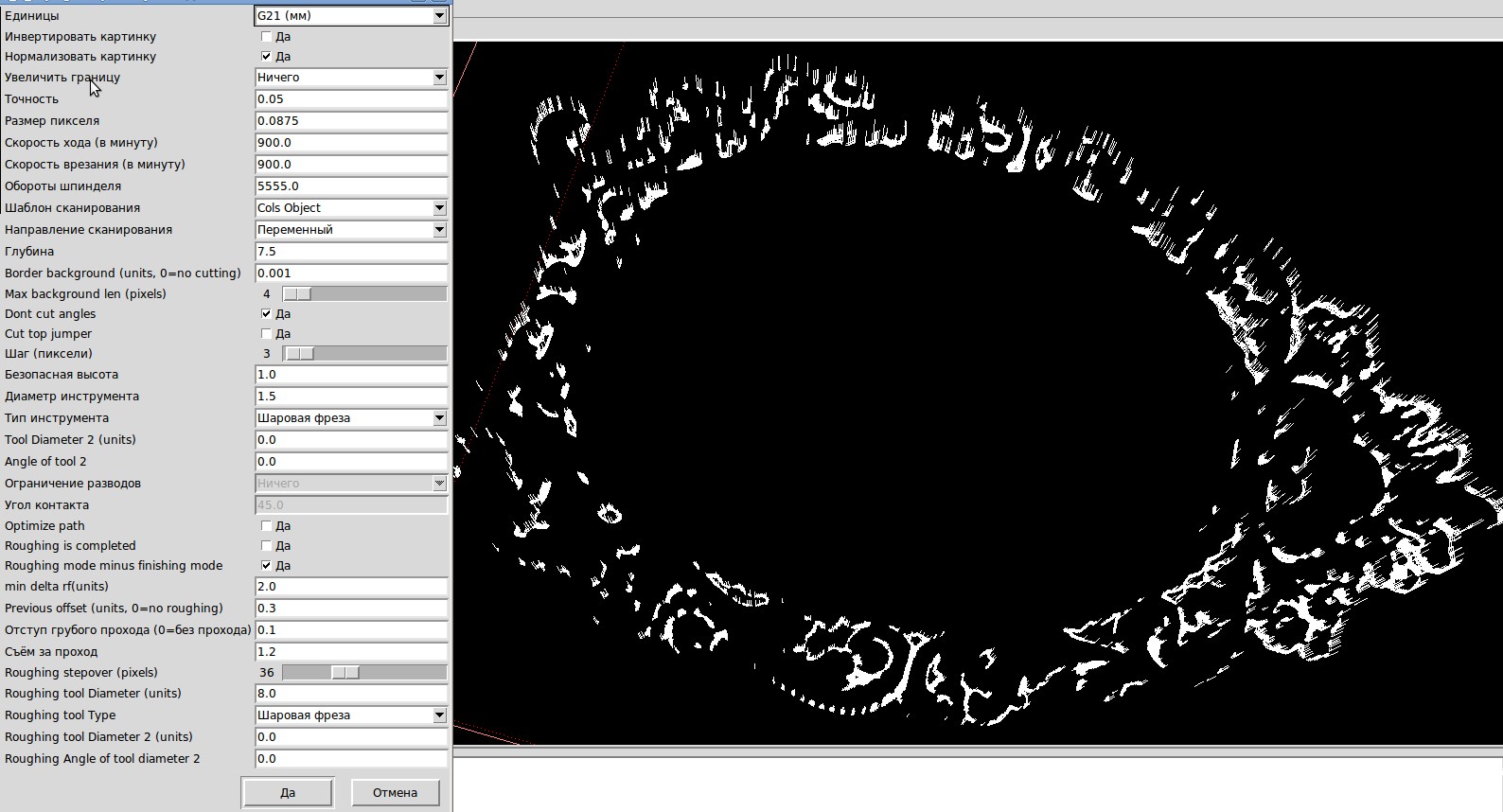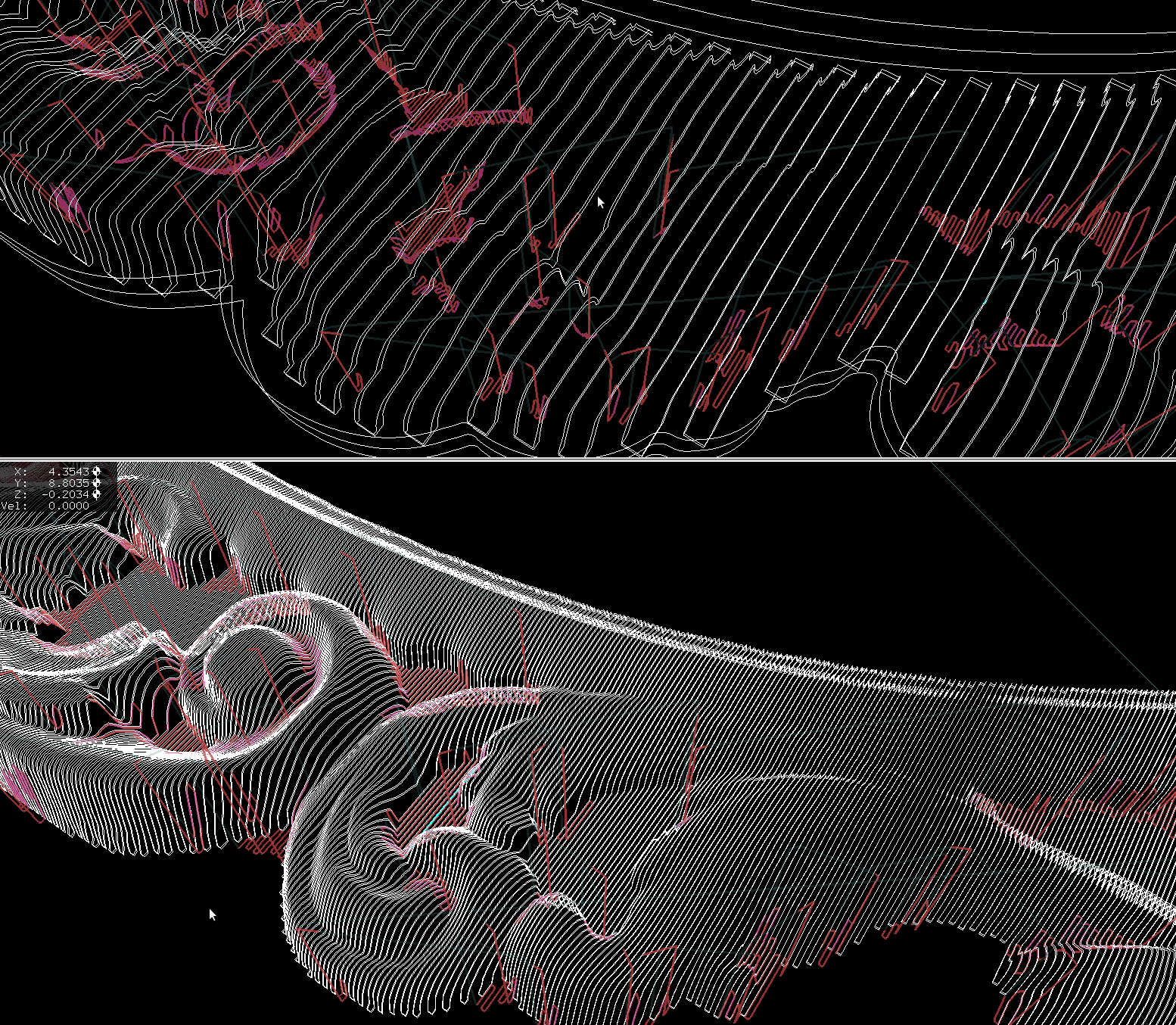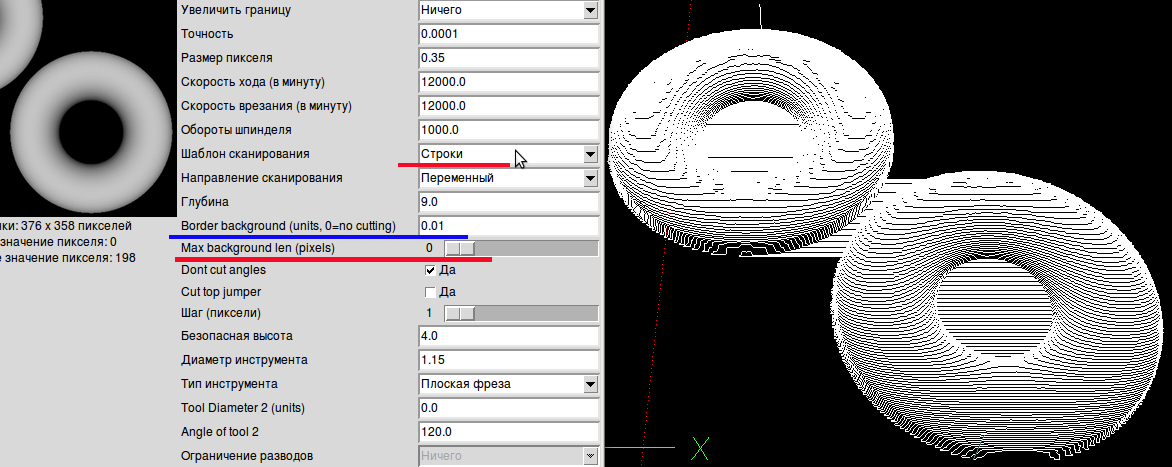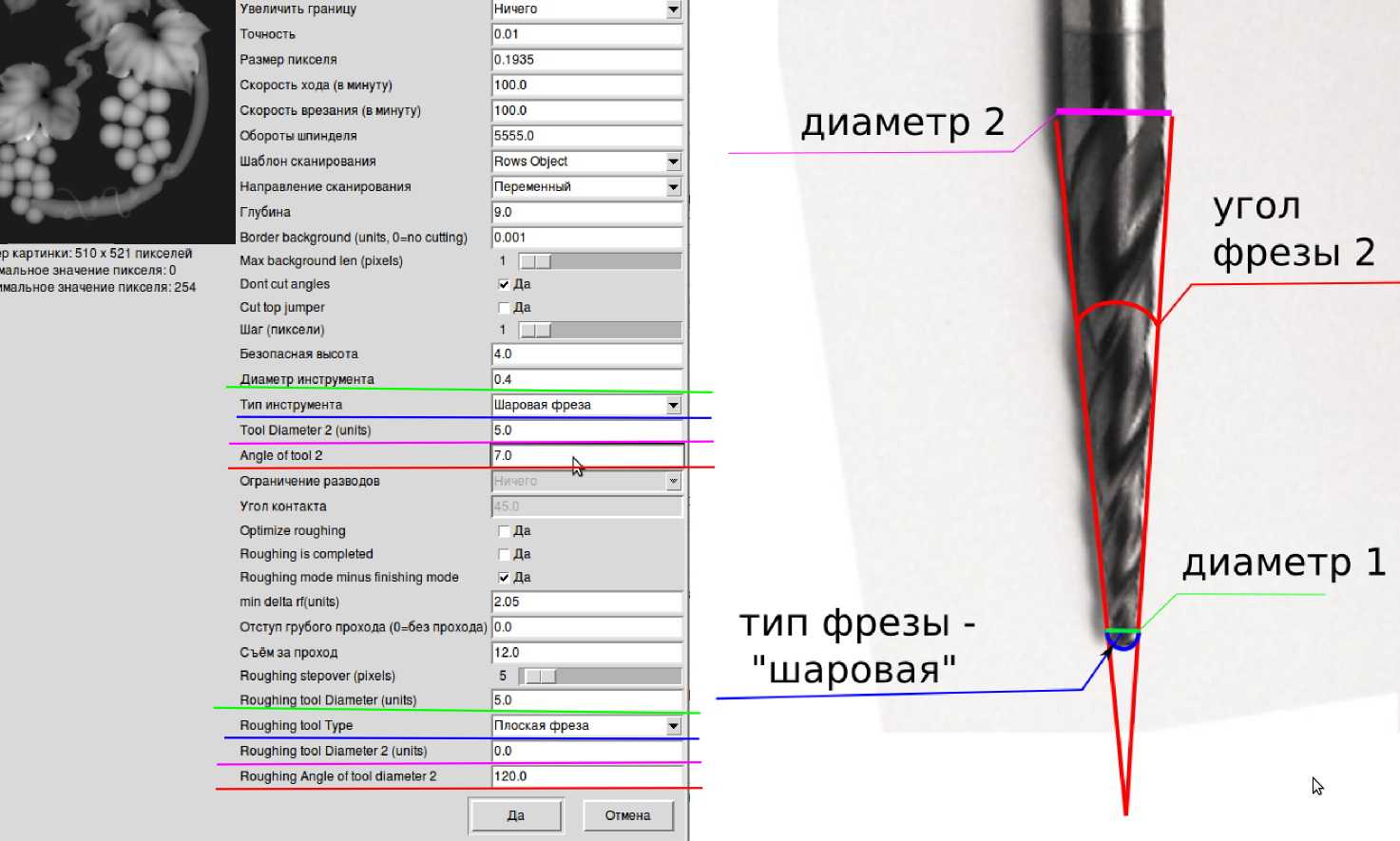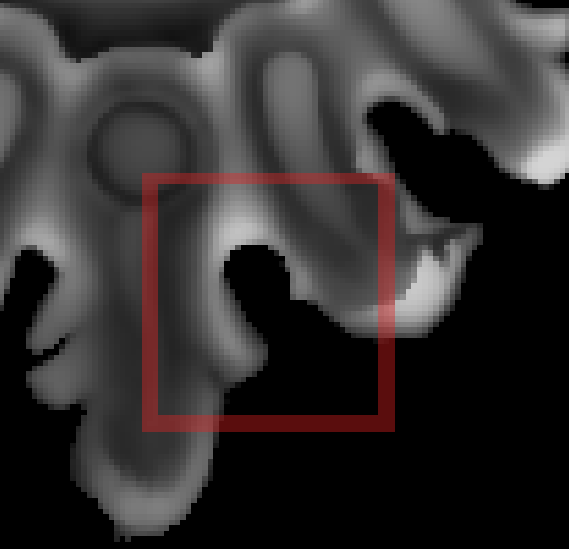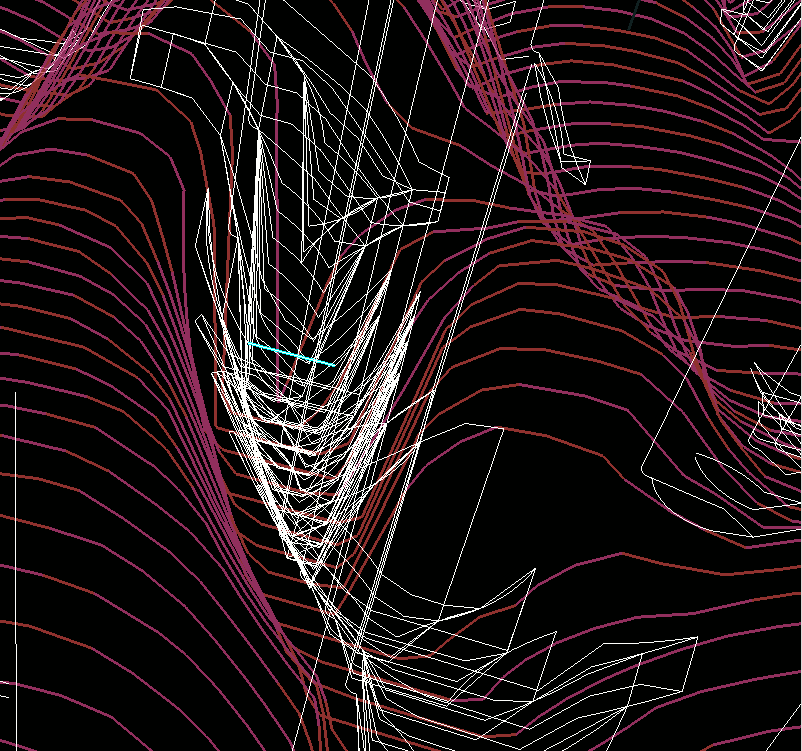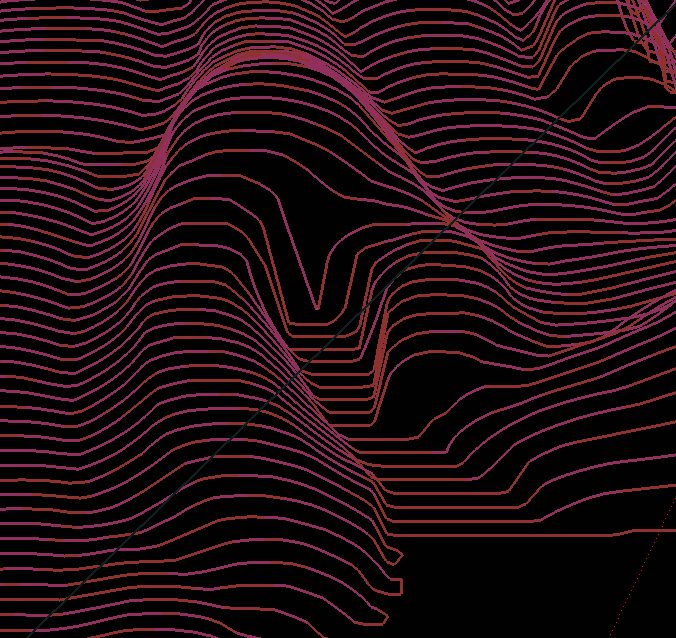New scrypt image-to-gcode.py - how to put on GIT ?
- Harmonist
- Offline
- New Member
-

- Posts: 3
- Thank you received: 0
I was refactoring code in python scrypt image-to-gcode.py. (I work this 1,5 years
2014-12-26 - new ver 3.8.7
I expanded functionality. Added 2 mode "Rows objectiv" "Cols objectiv" and some other functions.
You can see the results of these modes here:
translate.google.com.ua/translate?sl=ru&tl=en&js=y&prev=_t&hl=ru&ie=UTF-8&u=http%3A%2F%2Fcnc-club.ru%2Fforum%2Fviewtopic.php%3Ff%3D15%26t%3D3541%23p110429&edit-text=
original url cnc-club.ru/forum/viewtopic.php?f=15&t=3541#p110429 and cnc-club.ru/forum/viewtopic.php?f=15&t=2460
I think that it is necessary to update the script on GIT for it to become available to all users LinuxCNC. But I do not know much English and I can not write the correct documentation and comments.
Could you advise me of those engaged in finalizing LinuxCNC so I sent him this question?
Please Log in or Create an account to join the conversation.
- BigJohnT
-

- Offline
- Administrator
-

- Posts: 6999
- Thank you received: 1177
JT
Please Log in or Create an account to join the conversation.
- Rick G
-

- Offline
- Junior Member
-

- Posts: 27
- Thank you received: 155
Rick G
Please Log in or Create an account to join the conversation.
- BigJohnT
-

- Offline
- Administrator
-

- Posts: 6999
- Thank you received: 1177
I was the primary author of image-to-gcode but I don't maintain it much
these days. I welcome a new maintainer, particularly one who actually
uses it!
Jeff
So, would you like to be the new maintainer?
JT
Please Log in or Create an account to join the conversation.
- BigJohnT
-

- Offline
- Administrator
-

- Posts: 6999
- Thank you received: 1177
<cradek> jthornton: it would be absolutely great if alex/harmonist wants to improve and maintain i2g
<jepler> the code's not obviously terrible
<jepler> the guy is clearly actually using it
<jepler> I'm happy if someone can help him learn enough git to put his stuff in linuxcnc master branch
JT
Please Log in or Create an account to join the conversation.
- Harmonist
- Offline
- New Member
-

- Posts: 3
- Thank you received: 0
This is my first work on Python. In processing a serious bug: it uncontrolled eating memory (for large pictures 4000x2000 - eaten 1.5GB memory). Somewhere I do not clear the memory ... I would be grateful if someone would find this bug and fix it.<jepler> the code's not obviously terrible
I am very pleased your suggestion, but unfortunately I ran out of gas.<BigJohnT> So, would you like to be the new maintainer?
During development I understood almost everything code (except for a pair of functions), and now I see a lot of flaws that (I think) can be eliminated only by creating g-code for 3d models.
Some of the most significant are:
- To increase the accuracy necessary to increase the size of the image, while increasing the size of the image - growing time "compilation" g-code.
While CAM has turned very functional. It has the features that I have not seen in traditional CAM. I think using the image-to-gcode can even get 3d model - without turning preform from different sides, but only by making rotation axis Y.
I plan to describe the basic algorithm that I developed in the pictures, that any developer understands how it works and could freely continue improving the image-to-gcode or its CAM ...
This is the algorithm that makes the g-code only in those places where it is not included roughing cutter and depth of these locations exceed the maximum permissible maximum. Only in such places formed g-code for fine milling at a predetermined pitch penetration. It is necessary to thin cutters that can break down these locations - if this location does not pass layers but at one time.
(Because many CAM is no such algorithm - not to break the cutter users are layers - all the model - which increases the receipt of the product at times.)
With a little refinement can be done to to fine milling formed g-code in one pass, but when you approach these "narrow" and "deep" places pictures - special g-codes - to reduce movement speed by XX% ...
I think it is undertaken for the project BlenderСAM. This (free) plug-in for Blender for make g-code.
Now I understand a set of approximation points NURBS splines to modify another script called LinuxCNC autors.py. This script makes g-code (arc and lines) on the set of points, which gives him the image-to-gcode. But the quality of train code does not suit me: geometric lines it does well, but the model with smooth lines - if you closer the g-code in LinuxCNC - you can see the following ...
I plan to make a set point optimization algorithm instead of Douglas-Peusker - NURBS spline approximation algorithm described in documents "Optimal Single Biarc Fitting and its Applications" Hyungjun Park and papper "CAD/CAM interpolation for NURBS path interpolation on PC based real-time numerical control" by M.Leto, R.Licari, E.LoValvo, M.Piacentini...
Please Log in or Create an account to join the conversation.
- Harmonist
- Offline
- New Member
-

- Posts: 3
- Thank you received: 0
Please Log in or Create an account to join the conversation.

